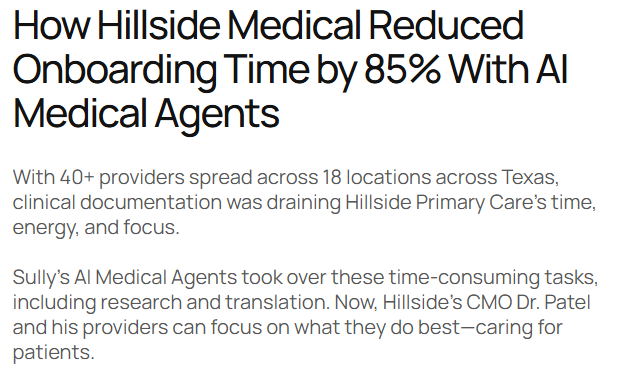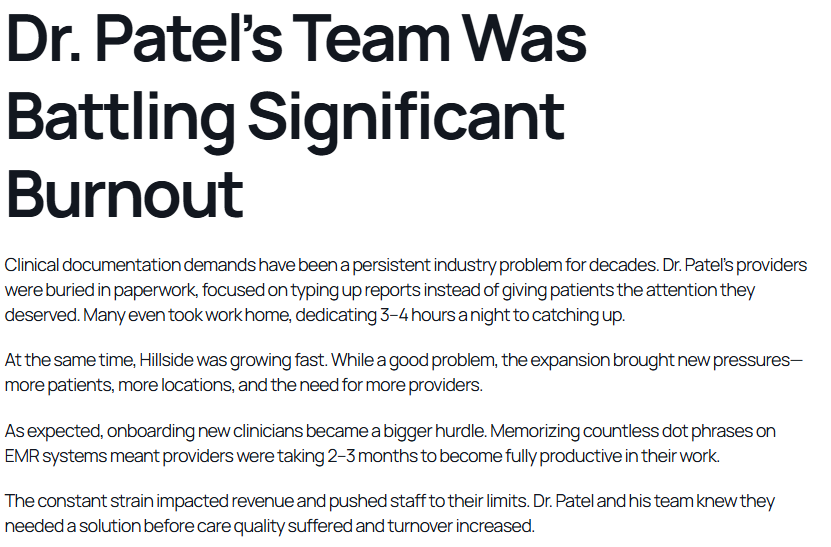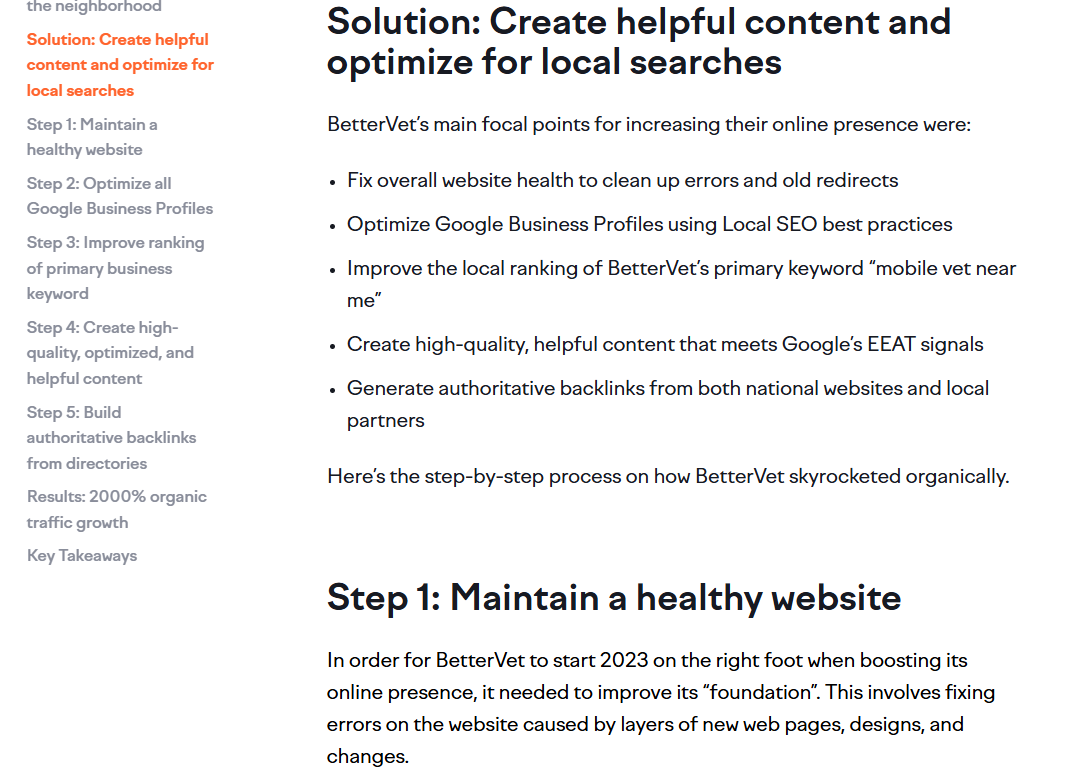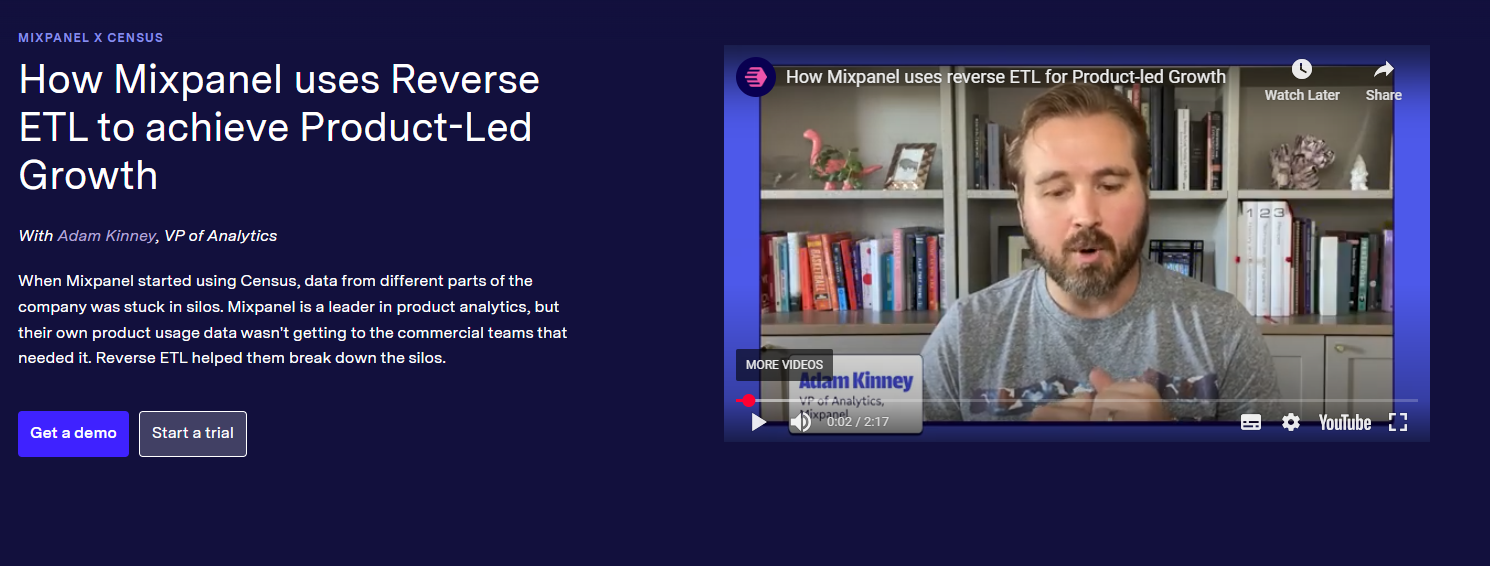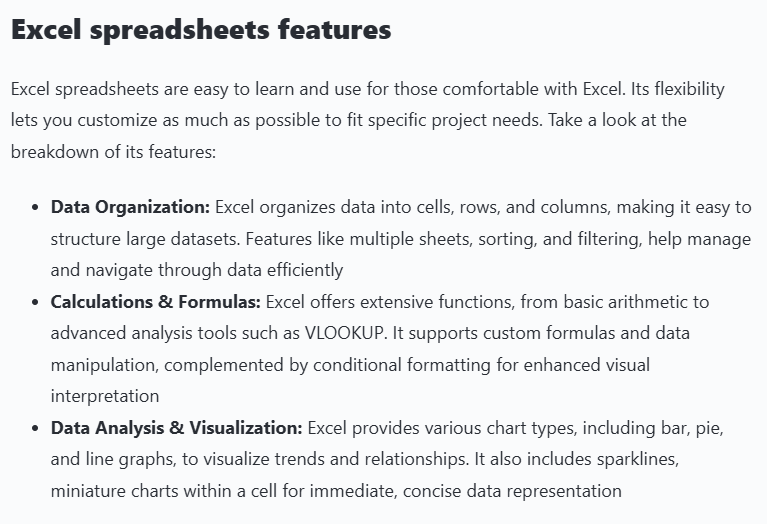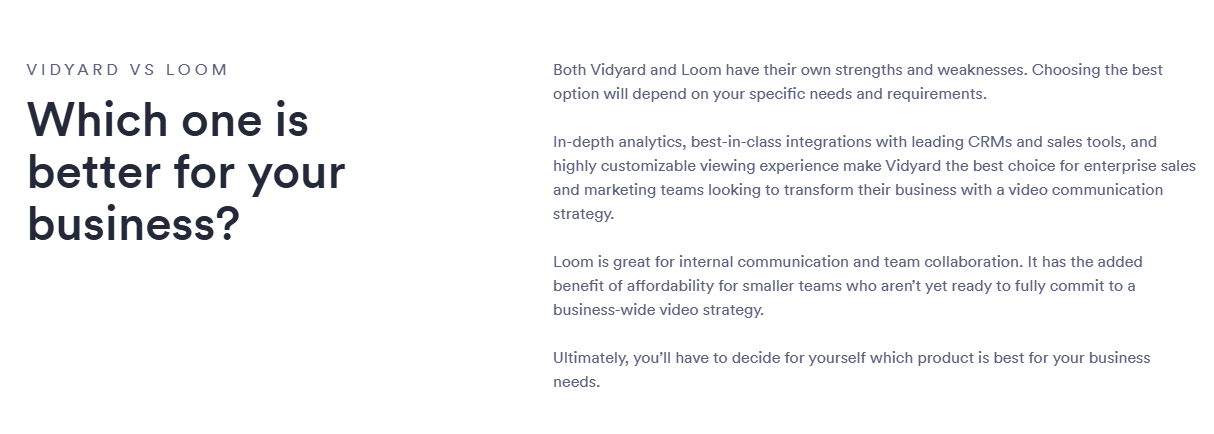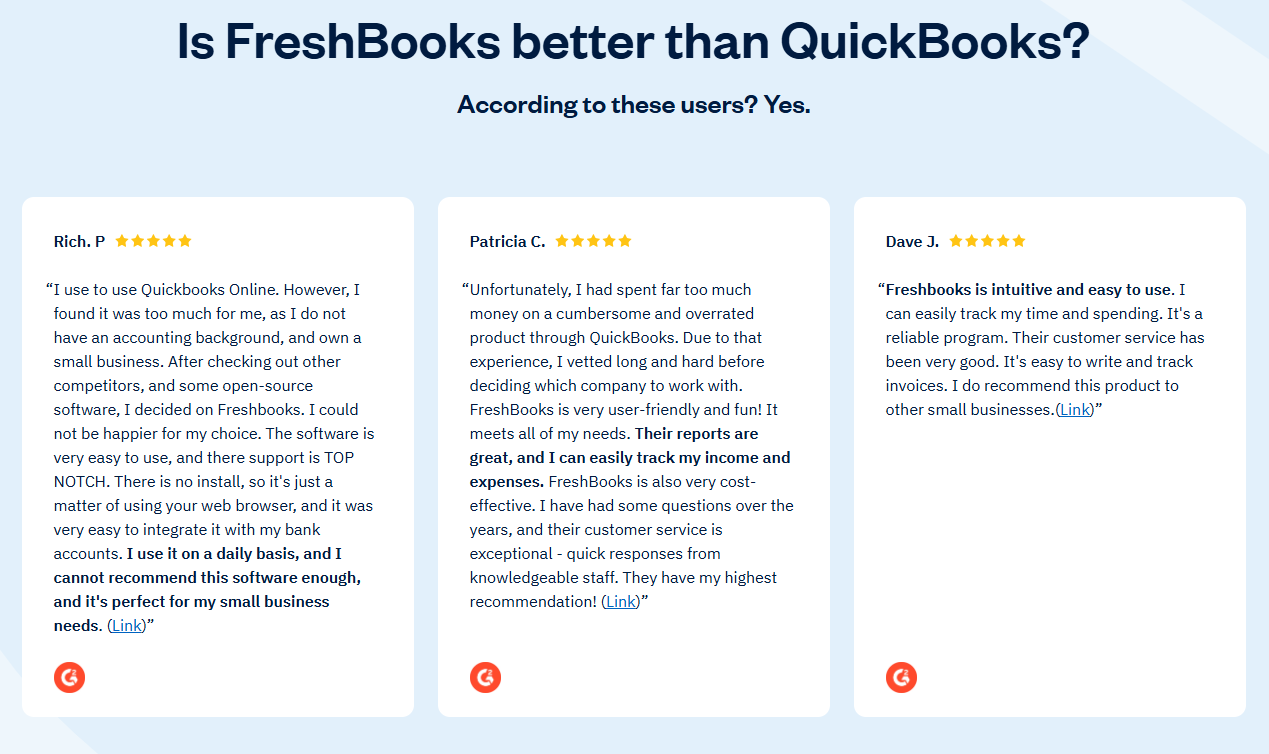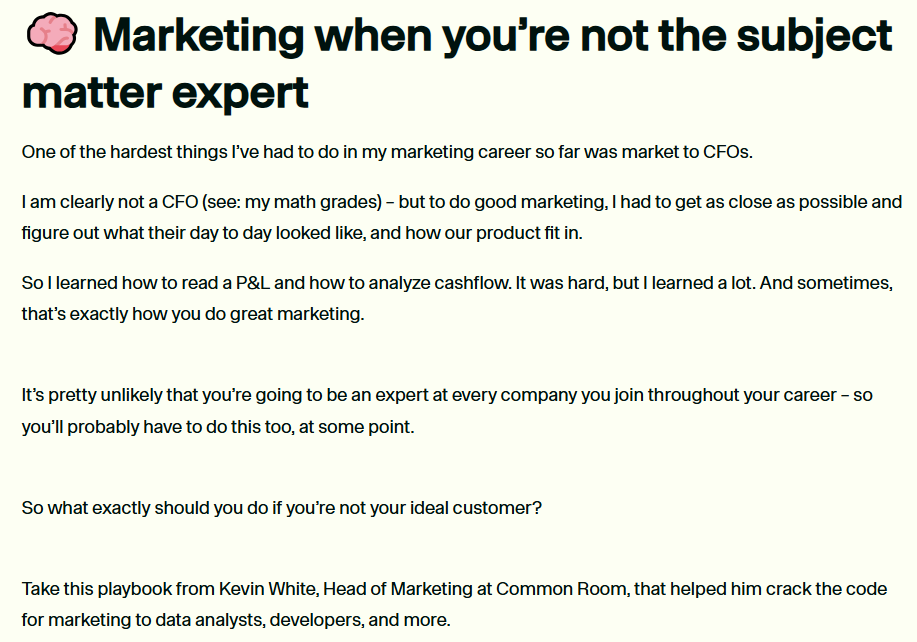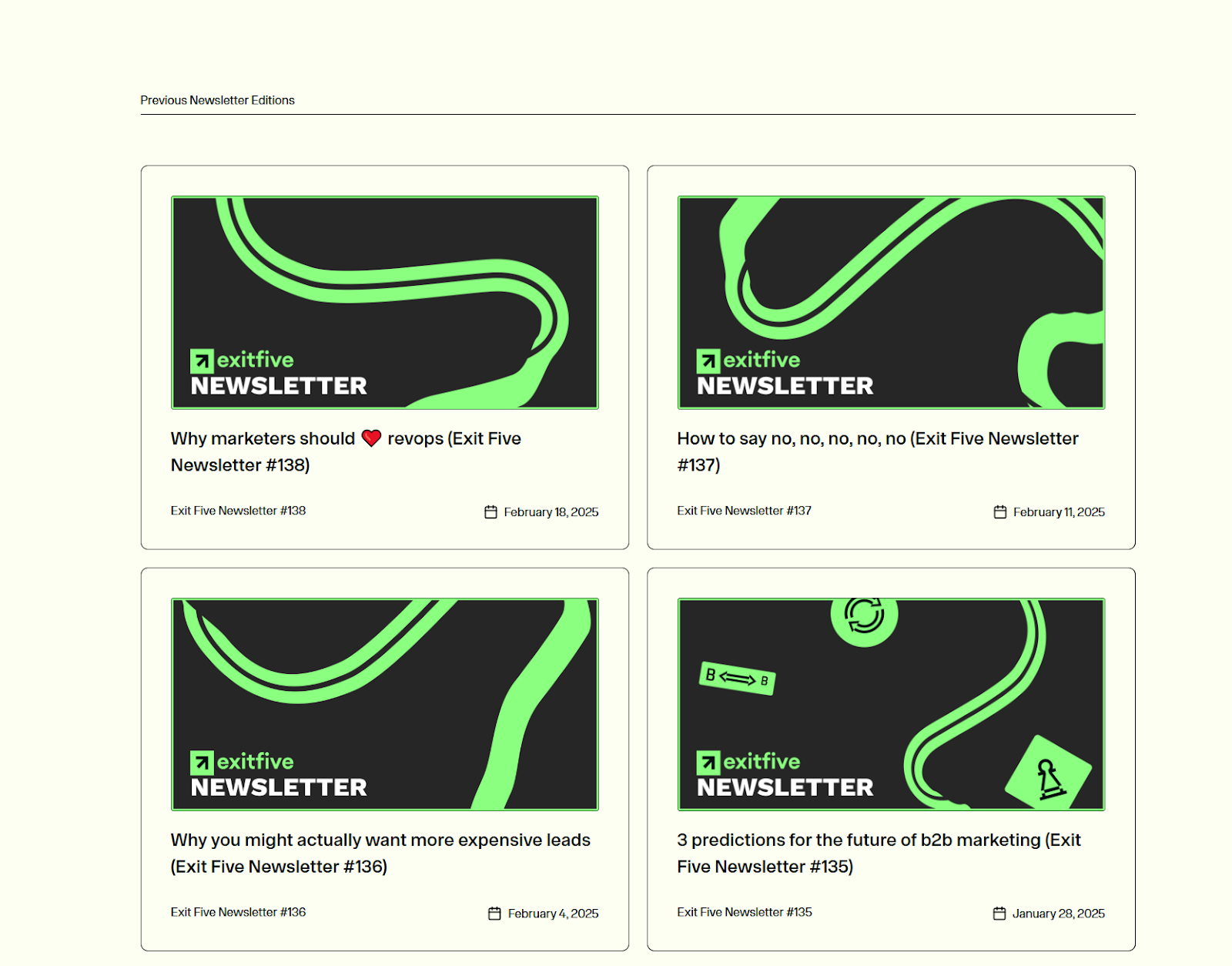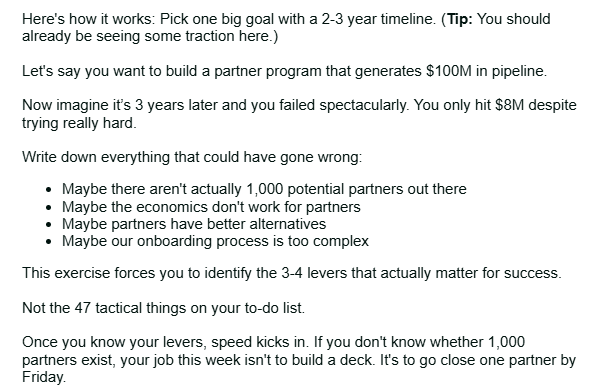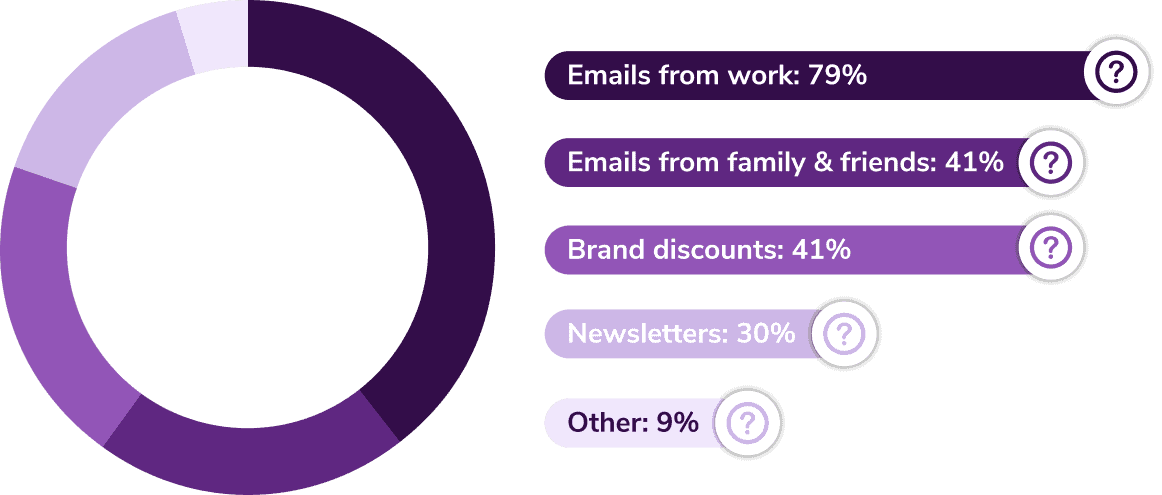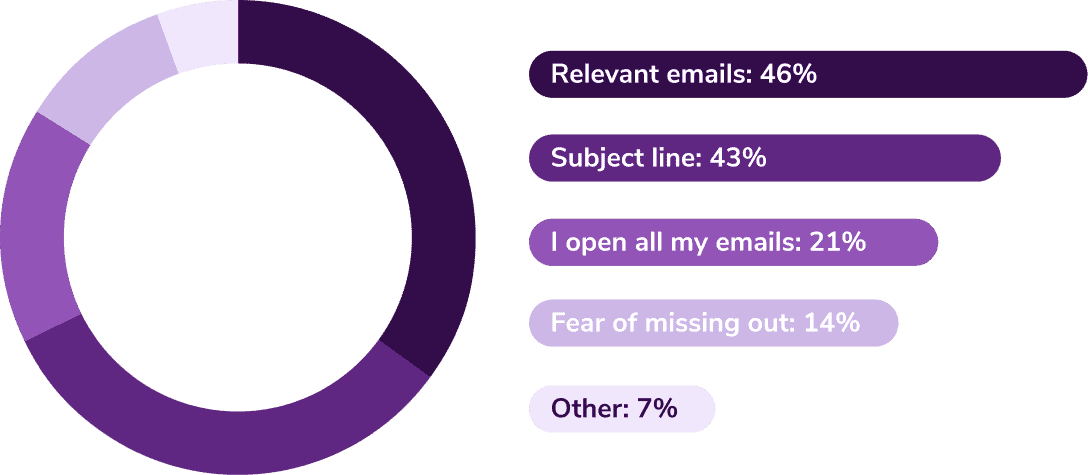In this article, we’ll share the content optimization methodology we used to help an enterprise software company get the following results by optimizing their existing content:
- 269.98% increase in organic traffic
- 202.41% increase in overall traffic
- 110% increase in user-sign ups
Let’s dive in.
🤫 We’ve included anonymized client data throughout this article. While we love a good breakdown, client confidentiality must come first.
What is content optimization?
Content optimization is the process of auditing and updating your existing library of blog posts, articles and case studies to increase organic traffic, engagement and conversions.
When conducting content optimization for the first time, it’s important to take a site-wide approach. Treat it as a project to maximize and capitalize on your existing content assets over a shorter period of time.
This article will show you the methodology to do this, along with advice on how to build an ongoing process as part of your broader content strategy.
Identifying optimization opportunities
It all starts with a content audit. By taking stock of your existing library of content, you can identify and prioritize the opportunities available to you.
Typically, we look for content optimization opportunities that sit within two lanes:
- Content that can be optimized to increase rankings in Google
- Conversion rate optimization (CRO) opportunities from content that generates sufficient traffic
For the former, the biggest opportunities are those ranking on page two or three for critical keywords. At Grizzle, we use data from Google Search Console, Ahrefs and various other sources to identify these:
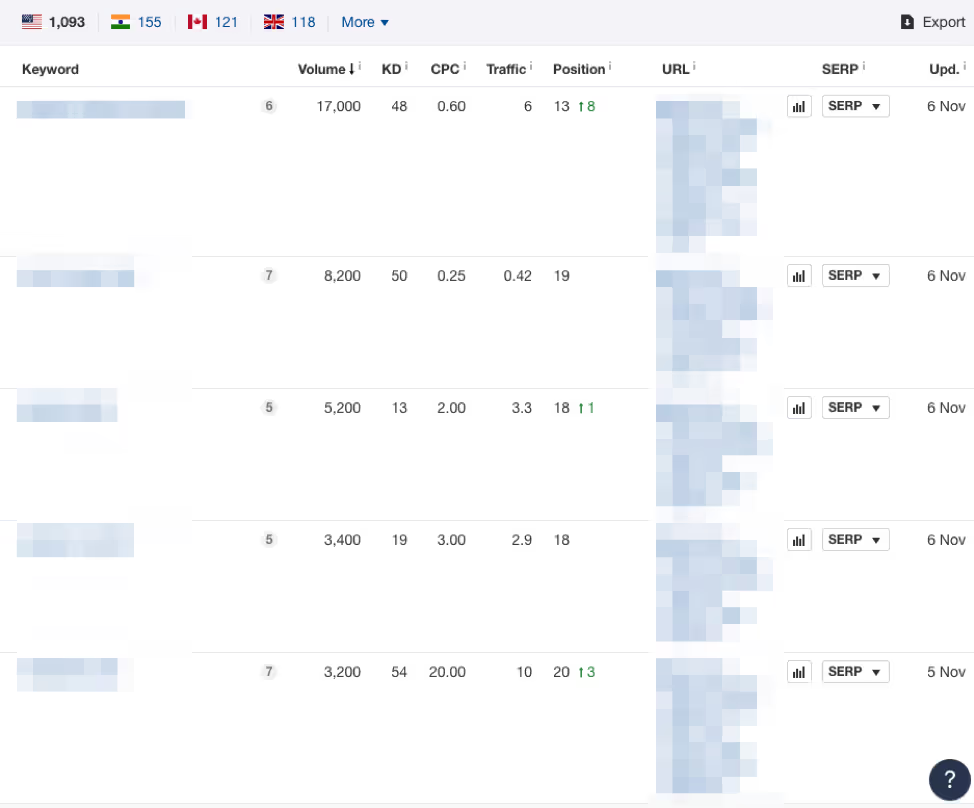
Using a scoring system, analyze each opportunity based on volume and keyword difficulty (KD) to evaluate how quickly you can improve results.
Each piece of content then goes through an evaluation process. This starts with the content asset itself, identifying areas that are outdated, gaps that need addressing and ways content can be improved for depth and originality.
Compare each article against your content competitors. Analyze top-performing articles, what they have in common and their weaknesses. We usually score content competitors against three categories:
- Content Competition: How comprehensive is the content? Does it include proprietary assets we don’t have access to? What can we add that they can’t?
- Backlink Competition: How many domains are linking to them? How fierce is the competition?
- Content Opportunities: What do we need in order to create the best piece of content on this topic and overcome the competition?
Clearscope is another tool we use at this stage, which provides data that drives what information to include in our updated content.
Re-distributing content is a critical part of the optimization process. However, backlink acquisition is not always necessary. If our content provides a better experience (and is more comprehensive in nature), then it’s possible to beat the competition simply by making our content stronger.
In fact, this is exactly what we did for another client that was stuck at the bottom of page 1 for a competitive broad term in the marketing space. After updating the content and optimizing it for this specific keyword, we ended up increasing organic traffic by 287%:
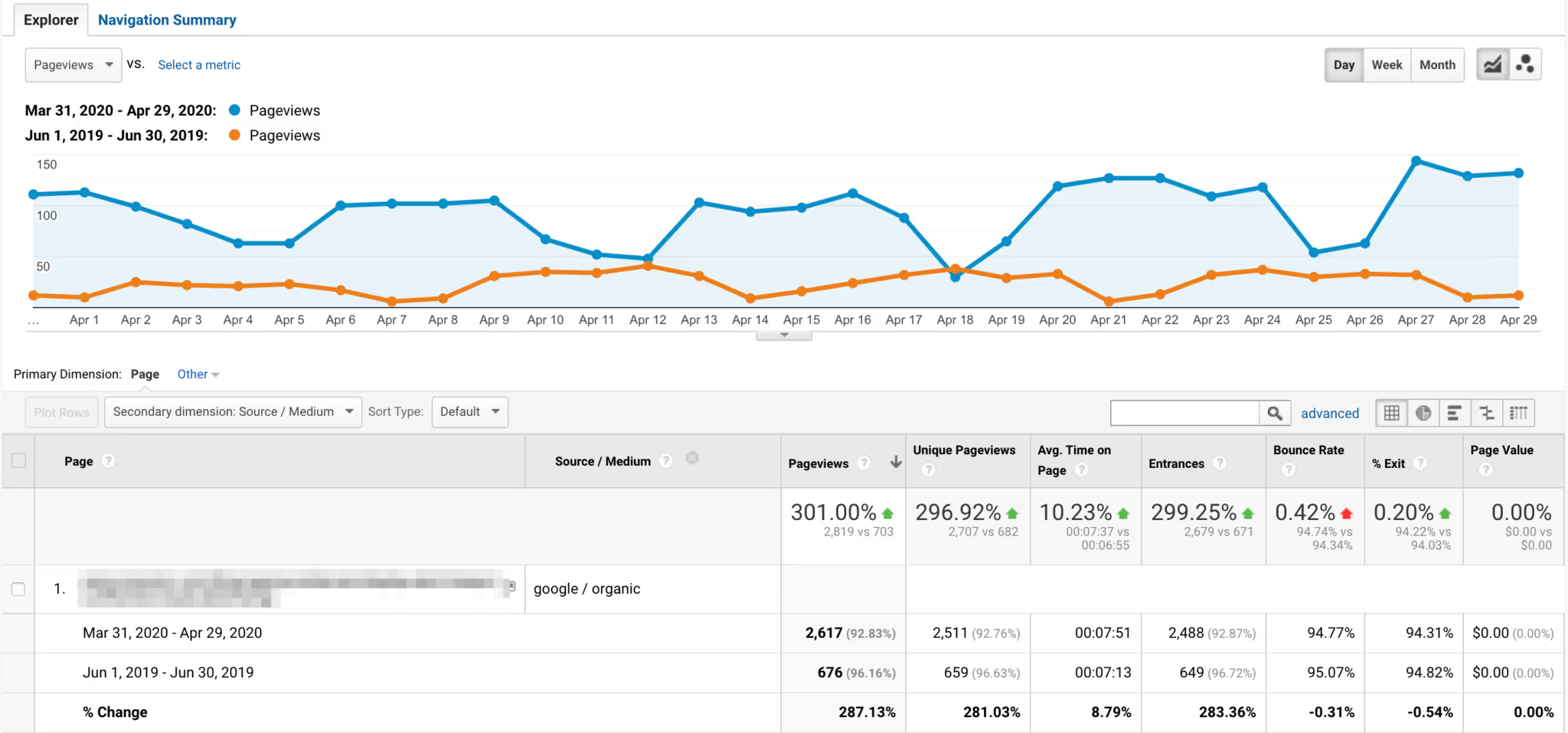
In another example, this article we created for Sales Hacker outranks the likes of HubSpot for a keyword that’s hard to rank for. Even though it has far fewer backlinks than other results, we still outrank them:

Finally, decide whether your content simply needs something extra (two or three paragraphs here and there) or a complete overhaul. If all it needs is some additional value, we’ll usually edit the content and fill any necessary gaps. However, outdated or shallow content often needs producing from scratch.
Planning and producing optimized content
With your optimization opportunities revealed, create a content brief to define your goals and create a detailed outline.
This brief should include competitor information (detailed above), SEO data and influencer marketing requirements. Thorough planning will improve the likelihood of success. To do this, you must aim for a delicate balance between giving Google what it wants, writing for people and making the content as original as possible. Luckily, you can have your cake and eat it too.
Use the data uncovered in the previous step to direct your content outline, ensuring it covers all bases while providing an original and value-driven narrative.
At Grizzle, we do this by collaborating with subject matter experts and content creators. They lend their insights, expertise and stories to provide a fresh perspective. This journalistic approach to content creation builds credibility, and helps distribute content through existing audiences.
While there are dozens of ways you can make your content original and valuable, some of our favourites include:
- Taking a fresh approach: Don’t follow the SERPs. Instead, look at what people care about right now, and tailor your content to those immediate needs.
- Adding depth: Provide additional advice and takeaways on granular ideas. Expand upon threads wherever possible.
- Collect proprietary data: Tap into your audience and use owned data to conduct research or uncover trends.
- Experience & design: One thing I still love about Brian Dean’s content is his use of design (like in this example). Can you create a bespoke experience for critical and strategic content pieces?
- Contributions & citations: Involve other thought leaders and experts in the content creation process. Not only does this enhance your content, but it provides access to a new audience.
You can also tap into visual content and video to enhance your content experience. For example, in the first section of this article, you saw an animation we created describing the optimization process. You can also create something as simple as an animated gif, like we’ve done for this article on bottom of funnel content:
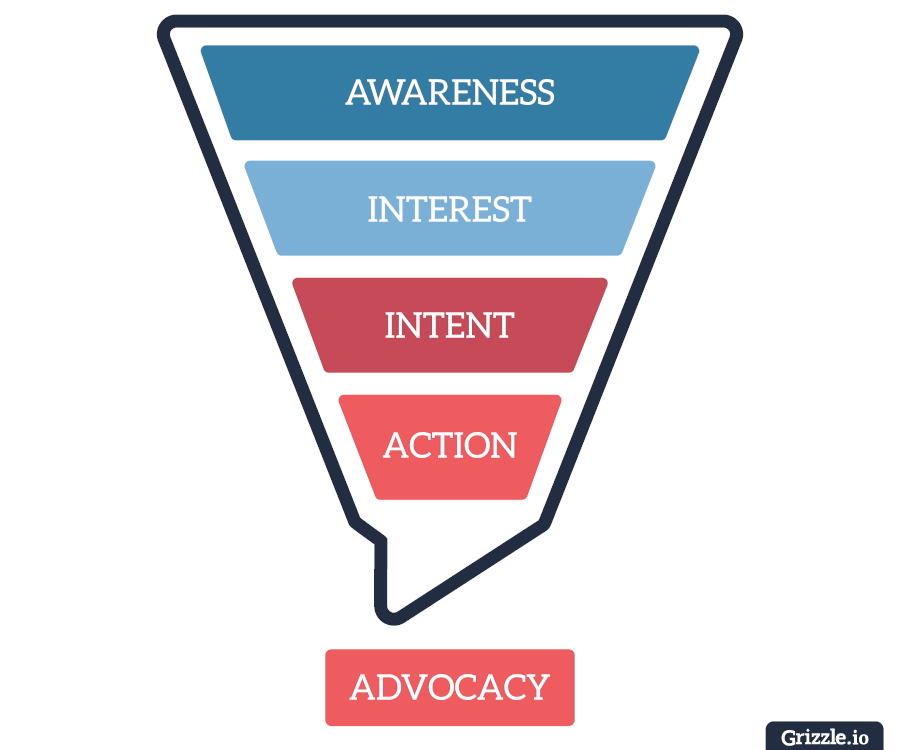
Most importantly, ensure that your existing content aligns with your current content strategy. For example, if you’re currently attracting new audience segments, moving upmarket or pivoting your distribution strategy, some articles and blog posts may no longer be relevant.
During the auditing process, focus on and prioritize the content that aligns with your current priorities.
Grouping together and merging similar themes
On top of optimizing individual blog posts, keep an eye out for content with overlapping topics. As part of the auditing process, group together content that covers similar themes.
For example, you may have recently created an article that provides in-depth and up-to-date advice on writing great ad copy. During your audit, you find the following complimentary articles:
- “How to Write Ad Headlines”: The term “ad headlines” generates 250 searches a month, and warrants its own article. Instead of merging this with your latest piece, update it and include an internal link.
- “X Principles of Great Ad Copy”: Upon inspection, this article might be several years old and extremely thin. Therefore, take relevant elements for your updated content and create a 301 redirect.
- “How to Write Ad Copy To Generate Leads”: While this may first seem like an overlapping topic, you may find it’s a common customer challenge. Make sure you exclude content that serves a specific purpose (conversions, sales enablement etc.) from the merging process.
Look at each blog post through a discerning lens. Check your analytics data to see how it’s performing across the entire funnel. Check-in with other teams to uncover the content that makes up their own toolkit.
This will help you increase your traffic, demand and acquisition efforts while maintaining the integrity of your growth engine.
Optimizing content for conversions
The second optimization lane involves taking a conversion rate optimization (CRO) approach. These are identified by identifying content assets that are generating a high amount of traffic, but can be improved for conversions.
To find these right experiments to run, ask yourself the following questions:
- Does the offer match the information the audience is looking for?
- Are we offering something of true value?
- What calls-to-action (CTAs) are being used?
- What CTAs is most appropriate for this audience?
For example, most senior decision-makers are looking for strategic advice. Therefore, it’s unlikely they’ll be interested in downloading an eBook that offers advice on a tactical level.
Furthermore, different audiences are sensitive to certain CTAs. Exit-intent pop-ups may work, but some audiences have been conditioned to ignore them. Sometimes it creates enough friction for them to abandon content altogether.
In-line CTAs are an effective and non-intrusive way to drive action. In the example below, Pipedrive has a simple in-line CTA that offers additional content around the topic the reader is currently engaged with:
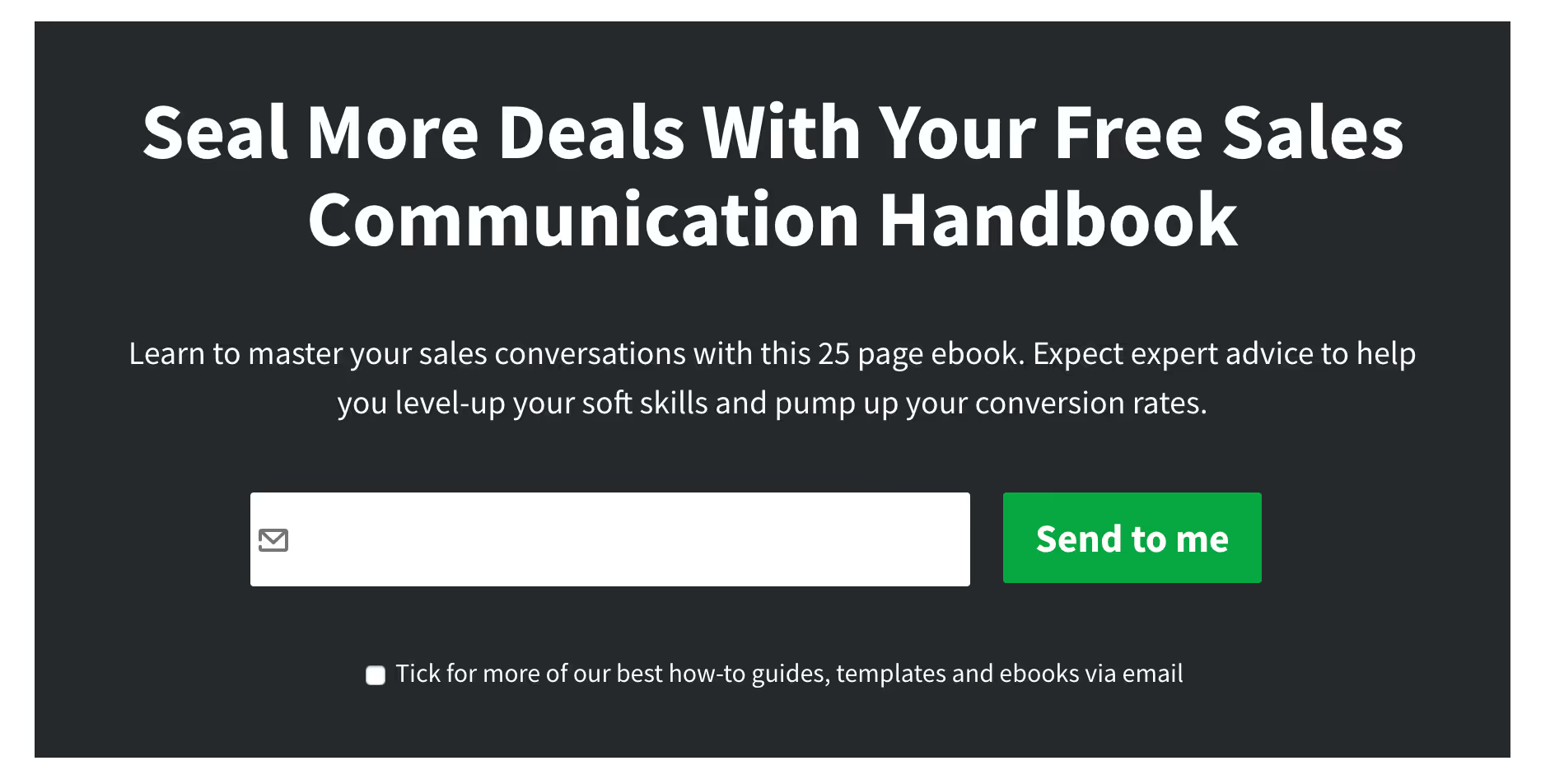
The offer itself is as important as the CTA. How does your lead magnet add additional value beyond the content users are actively engaged with?
The answer: craft lead magnets and offers that serve overarching themes.
For example, an ebook or training video about ad copy could be used on articles that talk about headlines, landing pages and Facebook ads.
Find the perfect balance between your offer, CTA and the placement. Take your audience into account, and consider crafting tailored offers or lead magnets for individual articles.
Re-distributing updated content for fresh eyes
With our content polished up and updated, it’s time to promote. Content distribution is key, but there’s no point in wasting time on ineffective channels just because they exist.
Start with people who shared and engaged with the original piece of content. BuzzSumo is useful for uncovering these individuals:

Strong relationships are foundational to content promotion. Being a trusted face on your primary channels will help your content be welcomed with open arms. This goes for all distribution approaches:
- Community engagement: Become a welcome face. Contribute to the conversation and become a trusted source of advice.
- Influencers: Get them involved with your content production. This not only provides you with a new audience to reach, but also makes your content more original.
- Link building: Build relationships with publications and creators. Find ways to add value, collaborate and build relationships. Avoid cold email at all costs.
Don’t forget about your owned assets. If your content has been given a new lease of life, relaunch it to your email subscribers and social media followers. Summarize new elements, and tell them what they’ll learn in this improved version.
An ongoing optimization process
The steps outlined so far will help with one-off auditing and optimization projects. However, it’s well worth building an ongoing content optimization process.
Why? Because it can future-proof your rankings and organic traffic. During Google’s May 2020 core update, Neil Patel (love him or hate him) analyzed 641 websites that updated content on a daily basis:
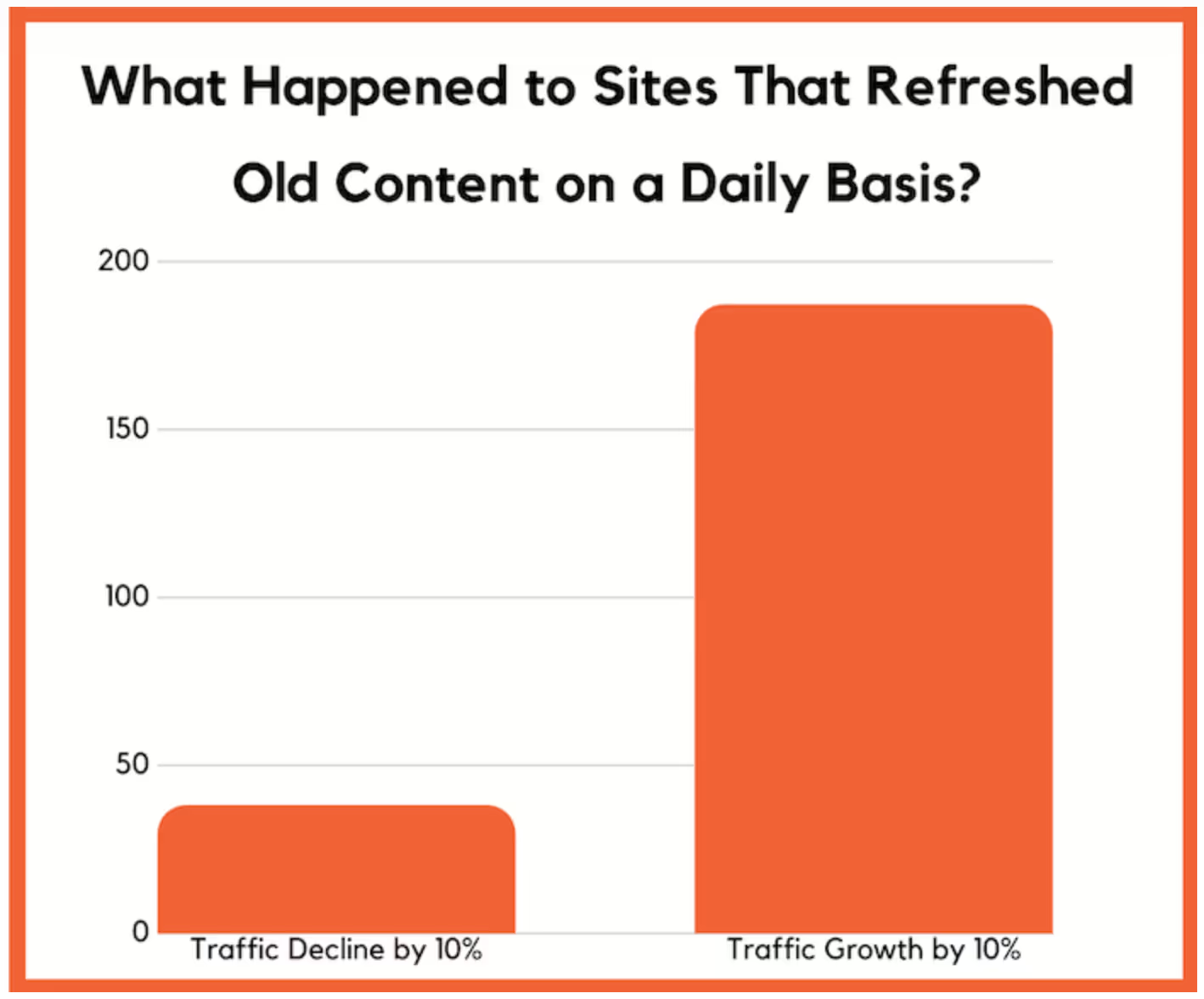
He found that only 38 of these sites (5.92%) saw traffic decline by 10%, which is extremely low for the volatility seen during the update.
However, 187 of those sites saw traffic increase by 10%.
Keeping content fresh and updated on a regular basis will not only increase your organic traffic and conversions, but can protect you against future algorithm updates.
Building an ongoing optimization process requires the following elements:
- Monitor market trends: What changes are happening in your industry that may affect the accuracy of your content? Social media marketing solutions, for example, will need to audit their content whenever a platform updates existing features or launches new ones.
- Monitor your rankings: When you start to see traffic dip, it’s time to act. Keeping your content updated (especially when targeting competitive terms) will help you increase and defend your position on the SERPs.
- Monitor conversions: CRO is a complex battle, so you’ve got to pick your battles wisely. Consider monitoring content against benchmarks and use fluctuations to inform your priorities. Alternatively, identify the 10% that contribute to strategic goals, and go all-in on those.
Building a reactive and pro-active process will help you improve results over time. Even a small 1% increase will compound over time. Start with the metrics that matter most, then build processes to act on them using technology and talent.
Conclusion
Your content optimization efforts must align with your existing strategy. It’s only worth optimizing content if it still has a place in your customer journey.
The philosophy behind content optimization is simple: Treat every piece of content like an asset. Re-invest in relevant content that will help you get better results.
A thorough content audit will show you what to keep, optimize and merge. Prioritize content that will make the biggest impact first, and you’ll quickly make a case for ongoing optimization with the boardroom.




